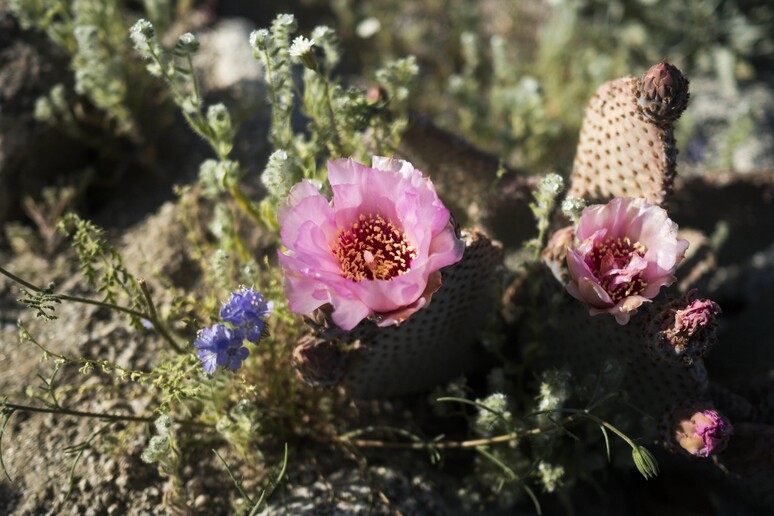Cactus pear should be considered
as a valuable asset, especially for food and livestock feed in
dryland areas, according to the Rome-based UN Food and
Agriculture Organization (FAO).
FAO recently gathered experts on the hardy plant to pool
their knowledge in a bid to help farmers and policy makers make
more strategic and efficient use of a natural resource too often
taken for granted.
For example, during the recent intense drought in southern
Madagascar, cactus proved a crucial supply of food, forage and
water for local people and their animals.
The same area had once suffered a severe famine as the
result of efforts to eradicate the plant, which some saw as a
worthless invasive species.
It was quickly reintroduced.
While most cacti are inedible, the Opuntia species has much
to offer, especially if treated like a crop rather than a weed
run wild, the FAO said.
Today the agriculturally relevant Opuntia ficus-indica
subspecies - whose spines have been bred out but return after
stress events - is naturalized in 26 countries beyond its
native range.
Its hardy persistence makes it both a useful food of last
resort and an integral part of sustainable agricultural and
livestock systems.
To spread knowledge of how to manage the cactus pear
effectively, FAO and ICARDA have launched Crop Ecology,
Cultivation and Uses of Cactus Pear, a book with updated
insights into the plant's genetic resources, physiological
traits, soil preferences and vulnerability to pests.
The new book also offers tips on how to exploit the plant's
culinary qualities as has been done for centuries in its native
Mexico and is now a well-entrenched gourmet tradition in Sicily.
"Climate change and the increasing risks of droughts are
strong reasons to upgrade the humble cactus to the status of an
essential crop in many areas," said Hans Dreyer, director of
FAO's Plant Production and Protection Division.
Cactus pear cultivation is slowly catching on, boosted by
growing need for resilience in the face of drought, degraded
soils and higher temperatures.
It has a long tradition in its native Mexico, where yearly
per capita consumption of nopalitos - the tasty young pads,
known as cladodes - is 6.4 kilograms.
Opuntias are grown on small farms and harvested in the wild
on more than 3 million hectares, and increasingly grown using
drip irrigation techniques on smallholder farms as a primary or
supplemental crop.
Today, Brazil is home to more than 500,000 hectares of cactus
plantations aimed to provide forage. The plant is also commonly
grown on farms in North Africa and Ethiopia's Tigray region has
around 360,000 hectares of which half are managed.
The cactus pear's ability to thrive in arid and dry climates
makes it a key player in food security, FAO said.
Apart from providing food, cactus stores water in its pads,
thus providing a botanical well that can provide up to 180
tonnes of water per hectare - enough to sustain five adult cows,
a substantial increase over typical rangeland productivity.
At times of drought, livestock survival rate has been far
higher on farms with cactus plantations.
ALL RIGHTS RESERVED © Copyright ANSA











